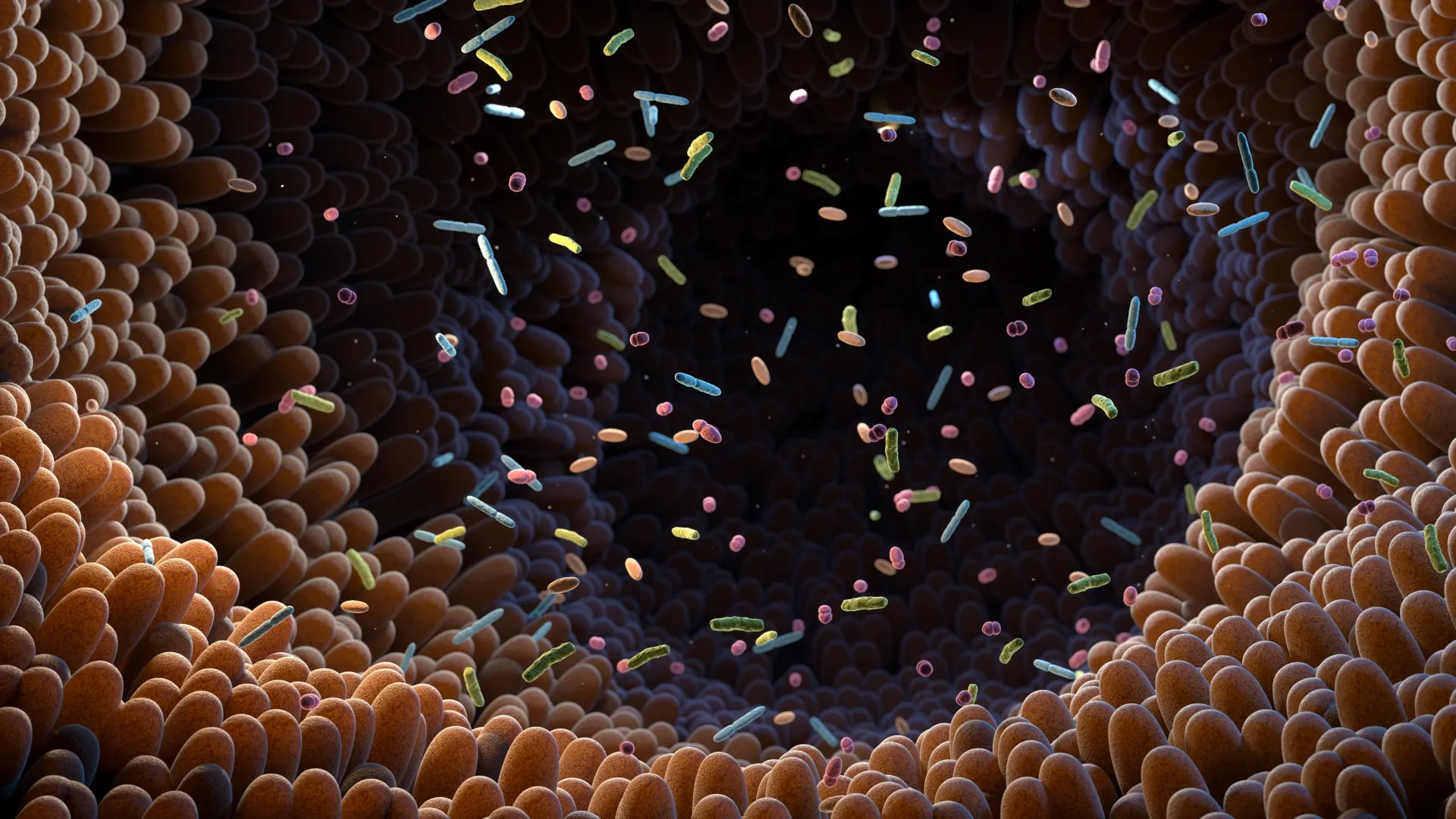AI unravels the hidden communication of gut microbes
Neural network explores giant gut microbe dataset to provide clues about health
- Date:
- November 10, 2025
- Source:
- University of Tokyo
- Summary:
- Scientists have turned to advanced AI to decode the intricate ecosystem of gut bacteria and their chemical signals. Using a Bayesian neural network called VBayesMM, researchers can now identify genuine biological links rather than random correlations. The system has already outperformed traditional models in studies of obesity, sleep disorders, and cancer.
- Share:

Gut bacteria play a major role in human health, influencing everything from digestion to immunity and mood. Yet, the microbiome's complexity is staggering. The sheer number of bacterial species and their interactions with human chemistry have made it difficult for scientists to fully understand their effects. In a groundbreaking step, researchers at the University of Tokyo applied a type of artificial intelligence known as a Bayesian neural network to study gut bacteria. Their goal was to uncover connections that traditional data analysis methods often miss.
While the human body contains roughly 30 to 40 trillion human cells, the intestines alone harbor about 100 trillion bacterial cells. In other words, we carry more bacterial cells than our own. These microbes aren't just involved in digestion; they also produce and modify thousands of compounds called metabolites. These small molecules act as chemical messengers, circulating through the body and influencing metabolism, immunity, and even brain function. Understanding how specific bacteria produce particular metabolites could unlock new ways to support overall health.
Mapping the Microbial Puzzle
"The problem is that we're only beginning to understand which bacteria produce which human metabolites and how these relationships change in different diseases," explained Project Researcher Tung Dang from the Tsunoda lab in the Department of Biological Sciences. "By accurately mapping these bacteria-chemical relationships, we could potentially develop personalized treatments. Imagine being able to grow a specific bacterium to produce beneficial human metabolites or designing targeted therapies that modify these metabolites to treat diseases."
The main challenge lies in the sheer scale of the data. With countless bacteria and metabolites interacting in complex ways, identifying meaningful patterns is extremely difficult. To tackle this, Dang and his team turned to advanced artificial intelligence (AI) methods.
Their system, called VBayesMM, uses a Bayesian approach to detect which bacterial groups significantly influence particular metabolites. It also measures uncertainty in its predictions, helping prevent overconfident but incorrect conclusions. "When tested on real data from sleep disorder, obesity and cancer studies, our approach consistently outperformed existing methods and identified specific bacterial families that align with known biological processes," said Dang. "[This gives] confidence that it discovers real biological relationships rather than meaningless statistical patterns."
Understanding the System's Strengths and Limits
Because VBayesMM can recognize and communicate uncertainty, it provides researchers with more trustworthy insights than earlier tools. Although it's optimized for large-scale data, analyzing massive microbiome datasets remains computationally demanding. Over time, however, these costs are expected to decrease as processing power improves. The system also performs best when there is extensive bacterial data compared to metabolite data; otherwise, accuracy can drop. Another limitation is that VBayesMM treats bacteria as independent actors, even though they often interact in complex, interdependent networks.
"We plan to work with more comprehensive chemical datasets that capture the complete range of bacterial products, though this creates new challenges in determining whether chemicals come from bacteria, the human body or external sources like diet," said Dang. "We also aim to make VBayesMM more robust when analyzing diverse patient populations, incorporating bacterial 'family tree' relationships to make better predictions, and further reducing the computational time needed for analysis. For clinical applications, the ultimate goal is identifying specific bacterial targets for treatments or dietary interventions that could actually help patients, moving from basic research toward practical medical applications."
By using AI to navigate the vast and intricate world of gut microbes, researchers are moving closer to unlocking the microbiome's potential to transform personalized medicine.
Story Source:
Materials provided by University of Tokyo. Note: Content may be edited for style and length.
Journal Reference:
- Tung Dang, Artem Lysenko, Keith A Boroevich, Tatsuhiko Tsunoda. VBayesMM: variational Bayesian neural network to prioritize important relationships of high-dimensional microbiome multiomics data. Briefings in Bioinformatics, 2025; 26 (4) DOI: 10.1093/bib/bbaf300
Cite This Page: